Things I Learned
Town planning used to be an Olympic event. (source)
A panenka is a technique used while taking a soccer penalty kick in which the taker, instead of kicking the ball to the left or right of the goalkeeper, kicks the ball to the center of the goal.1 (source)
JRR Tolkein’s first civilian job was an editorship at the Oxford English Dictionary in charge of words beginning with the letter “W”. (source)
American Airlines has twice sold lifetime unlimited first-class travel tickets, once in 1981 for $250,000; once in 2004 for $3 million. While the 1981 pass sold out, there were no takers for the 2004 pass. (source)
Pocahontas is buried in Kent, England. (source)
At the time of the September 11th attacks, the FBI had just eight Arabic speaking agents. (source)
Americans 55 and up control 70% of household wealth. (source)
The high five was popularized in the 1980s; the earliest known examples are from the 1960s; and the term itself is from 1981. (source)
Since 1926, 4 out of every 7 stocks in the U.S. have underperformed cash. (source)
Phoenicia, meaning “land of purple”, was name after the land’s chief marketable commodity: purple dye extracted from the shells of the murex snail. (source)
Lip Syncing is illegal in Turkmenistan. (source)
Judaeo-Papiamento, the ethnolect of Papiamento spoken by the Sephardic Jewish community of Curaçao in the Dutch Caribbean, is the only living Jewish ethnolect based on a creole language. (source)
The average American spends $222 a month eating out at restaurants. (source)
Every Rubik’s cube can be solved in 20 moves or fewer. (source)
October 31, 2000 was the last day in which every human was on earth. Since then, there has been at least one human in space at all times. (source)
Mountain Dew was originally a 19th-century slang term for whiskey, especially Highland Scotch whisky. (source)
Chase and American Express waive all credit card fees (including annual fees) for active duty military in order to comply with federal law requiring financial relief to service members (source)
Graphs I Liked
Sales of berries
Tariff revenue as a percentage of total US federal revenue
Average Salaries vs. Average Salaries per game
Finally…
If you have been paying as close attention to the Olympics as I have,2 you may have noticed a debate resurface regarding whether we should rank countries on the number of medals or the number of gold medals. (At the moment, China leads in gold medals, while the US leads in total medals). The NYTimes had an amusing (if convoluted) article in which they showed how the ranks depend on the various weights the reader attaches to Gold/Silver/Bronze. For example:
While I appreciate the freedom to choose one’s own weights, I’ve been thinking a lot about how we ought to choose the weights for Gold/Silver/Bronze.3 I realized that we have a pretty impartial way to weigh them: many countries offer their athletes monetary incentives for medals; the US, for example, pays $37,500 for gold, $22,500 for silver, and $15,000 for Bronze. This is as close to market-based prices as we can get!
I pulled every country’s monetary incentives and plotted them to understand the relative weights:
Malaysia pays the most for gold relative to bronze (9.8x), while Slovenia pays the least (1.3x). On average, countries pay 3.01x for gold compared to bronze, 1.67x for silver compared to bronze, and 1.73x for gold compared to silver). These roughly translate to weights of 9:5:3. I recalculated the medal counts as of end of day (Aug 1, 2024), reranked the countries and…I’m pleased to report that using our impartial weighting scheme, the US comes out on top! 🇺🇸
I tried to find out the percentage of penalty kicks that are panenka kicks. I found some sources that said ~28% of penalty kicks are to the center of the goal…which seems high?
I think the Olympics combine all the best qualities of patriotism, sports as entertainment, and the human condition (physical and otherwise).
This is similar in spirit to choosing priors in Bayesian thinking. When possible, we want to be as impartial / data-driven as possible in choosing our parameters.



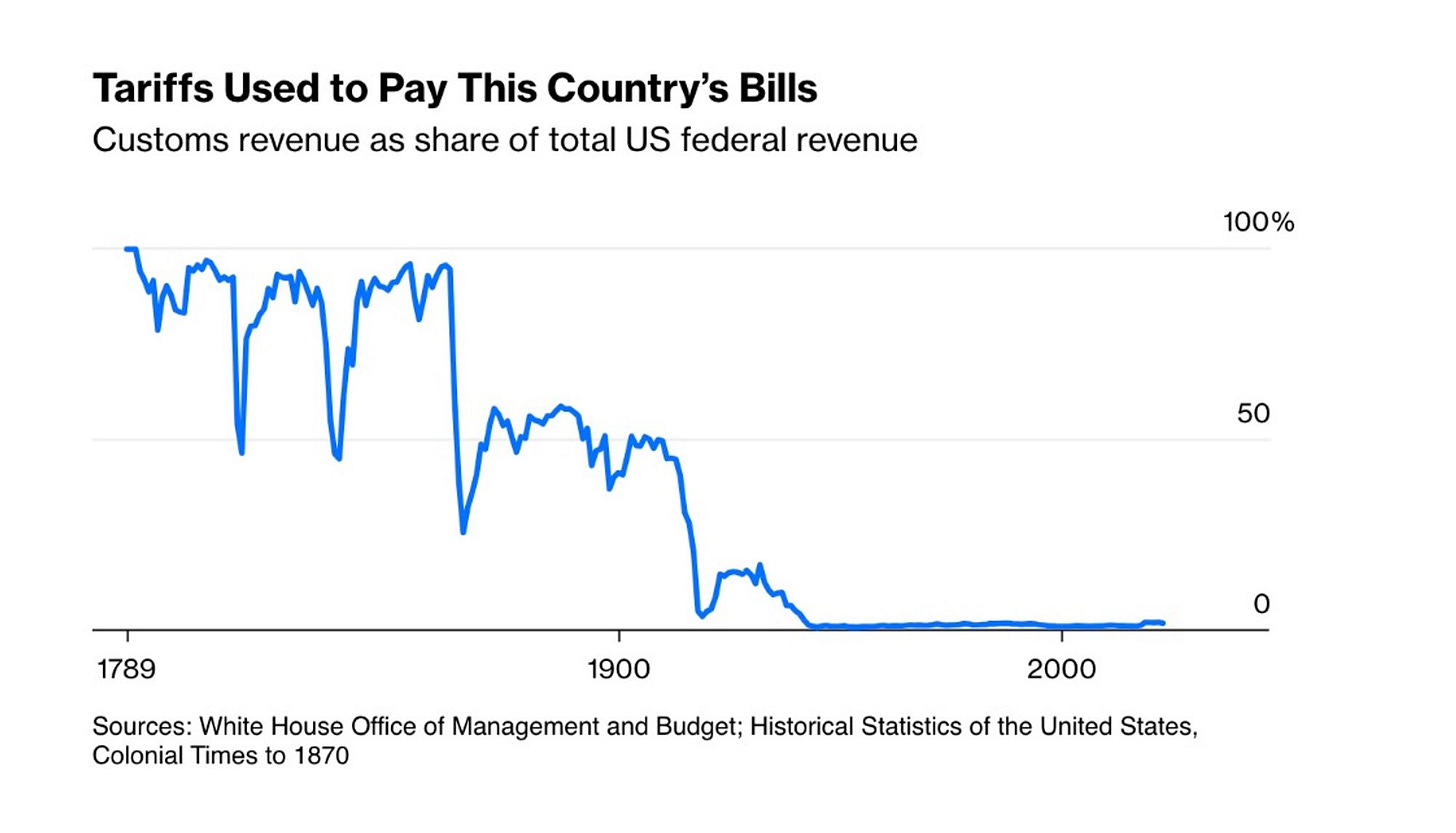
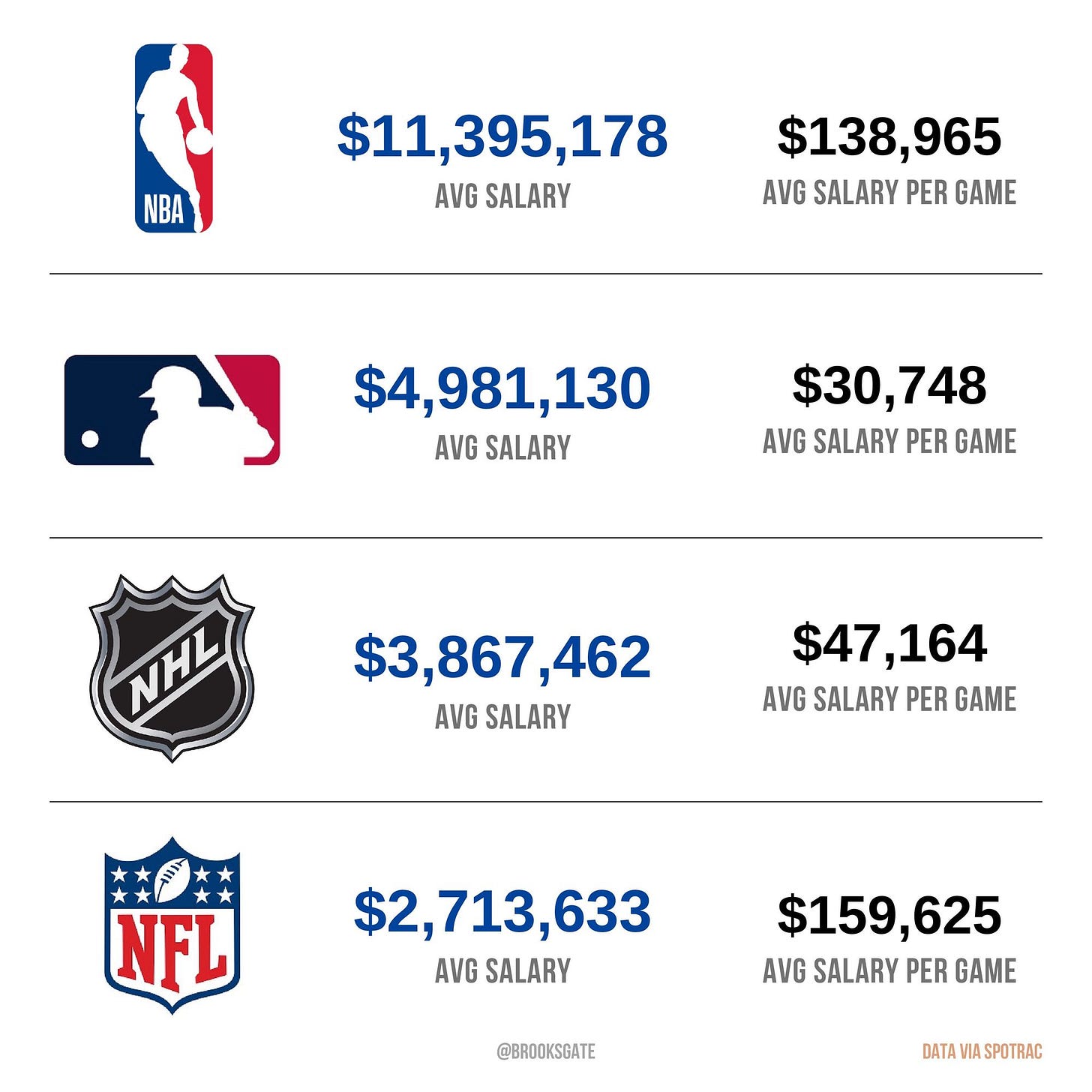
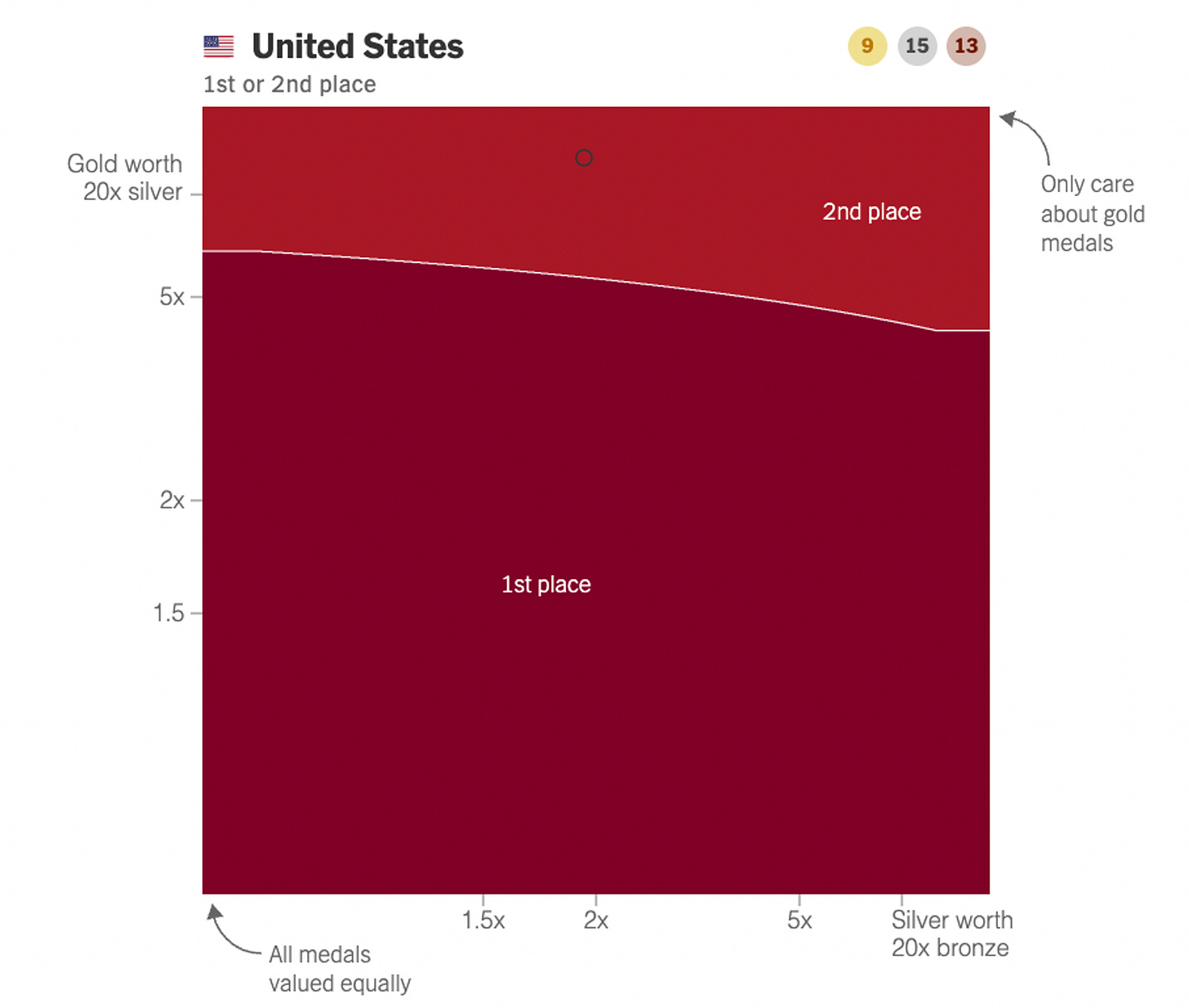
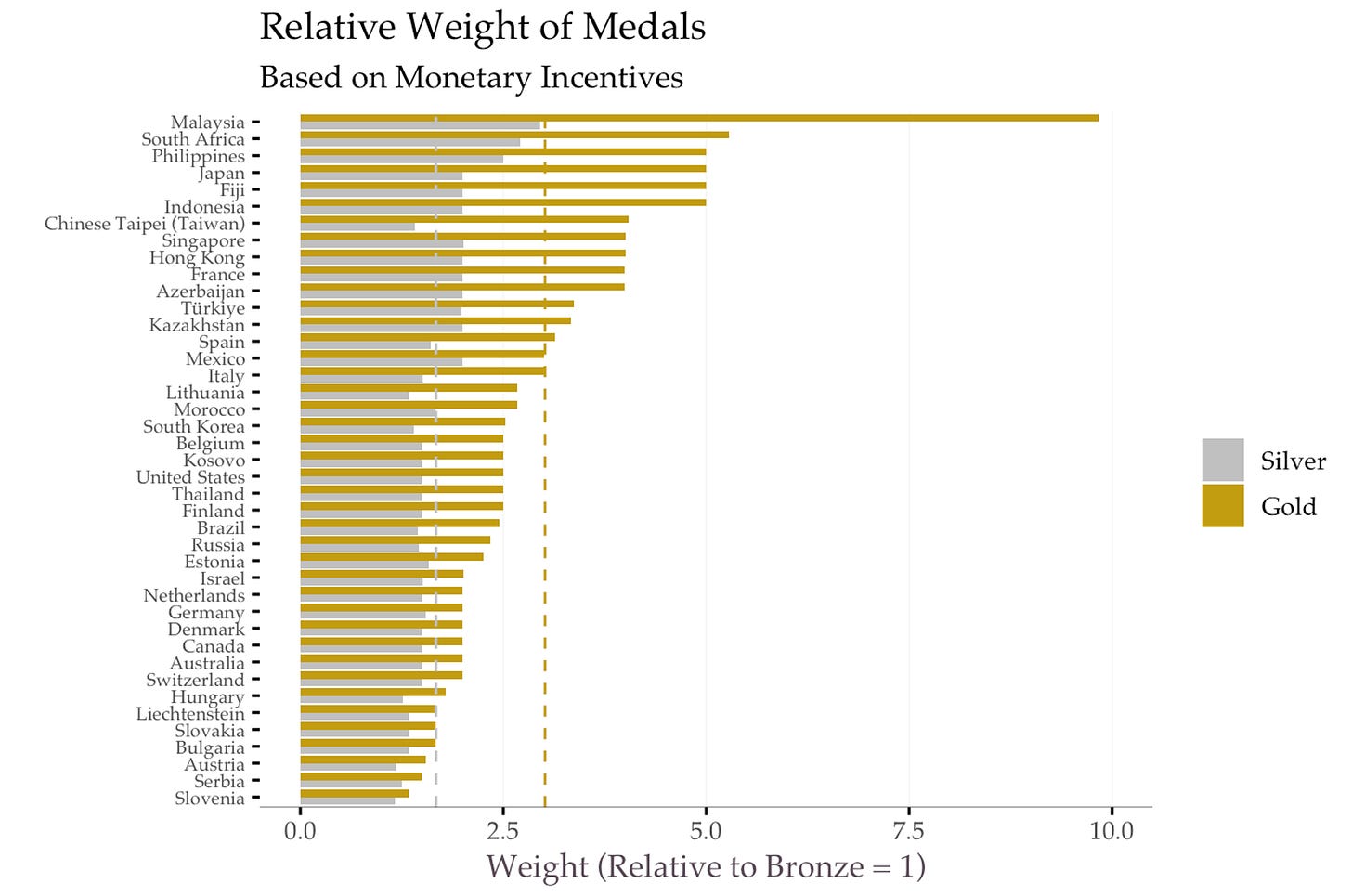
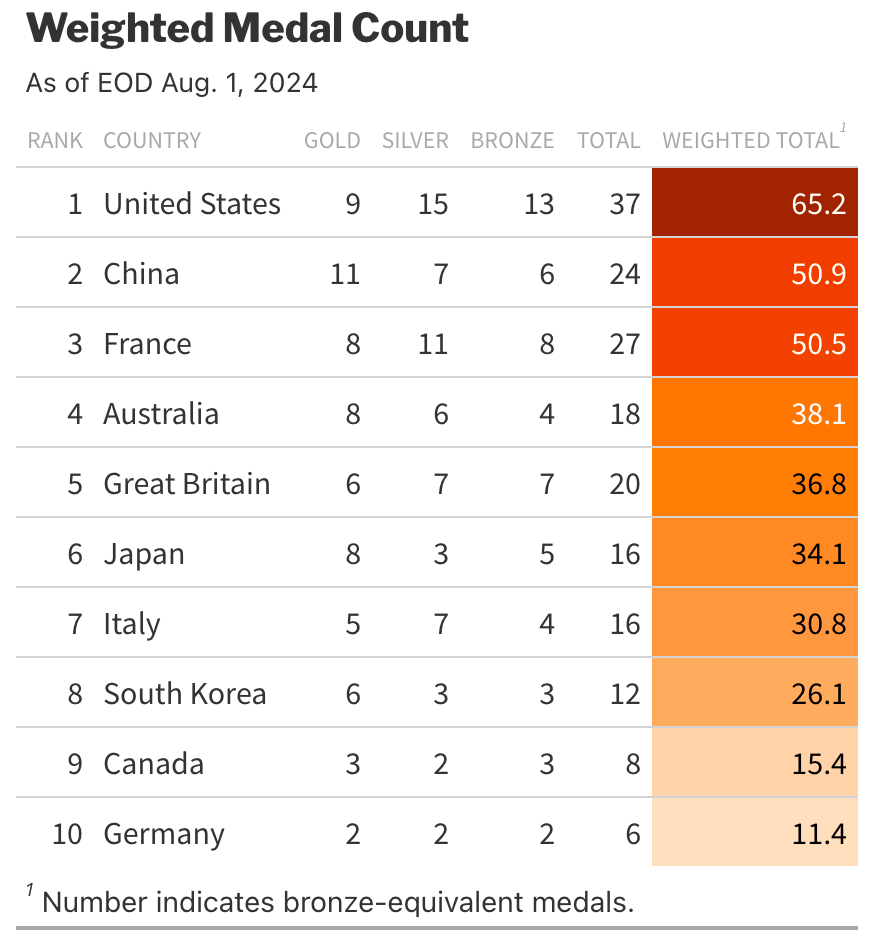
Putting extra financial incentives aside, what is the relative worth of the actual medals themselves, assuming no emotional premium, what is that amount of gold worth, vs that amount of silver, cs that amount of bronze?
For panenka, "...gives a light touch underneath the ball..." is the key aspect of the kick in addition to the direction. "~28% of penalty kicks" are mostly just shooting straight into the center without the "light touch."